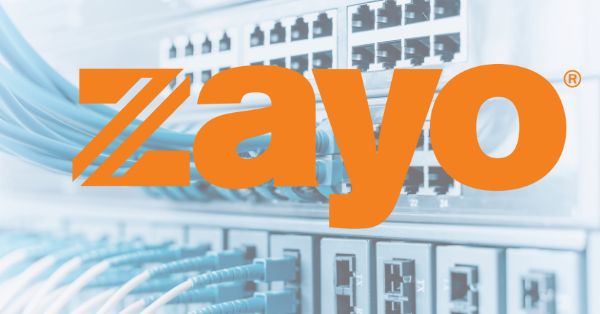Introduction – Offshore 5G and Edge Compute Breakthrough
The offshore oil and gas sector is no stranger to tough conditions and technical barriers. Tampnet, a leader in offshore connectivity, has made a giant leap by deploying the world’s first fully autonomous private 5G network with Edge Compute for Aker BP’s Edvard Grieg platform in Norway. This deployment is more than a network upgrade — it’s a digital backbone that will soon expand to other offshore sites like Yggdrasil, Fenris, Valhall, Alvheim, Ivar Aasen, and Skarv.
Offshore Connectivity Challenges for Oil Platforms
Offshore oil rigs operate in some of the world’s harshest conditions. Steel structures and unpredictable weather pose big challenges for wireless signals. Latency-sensitive operations demand near-instant data processing, but sending every bit of data to shore for analysis wastes valuable time. Meanwhile, complex equipment and tight safety protocols require constant monitoring and fast response times. Any communication delay can risk safety and efficiency.
Traditional offshore communication setups simply can’t deliver the reliability and low latency that today’s intelligent operations demand.
Tampnet’s Private 5G and Edge Compute Solution
Tampnet’s solution combines private 5G with Multi-Edge Compute (PMEC) to solve these challenges. With full wireless coverage — indoors and outdoors — crew members, autonomous systems, and IoT sensors can stay connected in real time. Local Edge computing means critical data is processed directly offshore, so there’s no need to send it back to shore for every decision.
Key features include:
- Complete indoor and outdoor wireless coverage for the whole platform.
- Local Edge processing for faster data handling and reduced shore dependency.
- Real-time support for sensor data and predictive maintenance.
- Seamless integration with remote AI tools and expert systems.
- Support for mission-critical communications.
- Enabling new use cases like autonomous drones, robotics, digital twins, and Augmented Reality inspections.
Together, these capabilities unlock safer operations, reduced offshore manning, faster decision-making, and improved sustainability.
Proven Offshore 5G Network Success
Tampnet’s track record speaks for itself. The company already provides high-capacity offshore connectivity for more than 350 rigs and vessels worldwide. Its network covers the North Sea, Gulf of Mexico, Trinidad & Tobago, and Canada.
The Edvard Grieg project is the first deployment of its kind — fully autonomous, end-to-end private 5G with Edge processing offshore. Aker BP has already signed up to expand this setup across multiple assets, reinforcing their commitment to digital transformation.
Why Tampnet Chose Mavenir for 5G Core
Tampnet chose Mavenir as its key technology partner for this next-gen rollout. Mavenir’s cloud-native Converged Packet Core replaces legacy core network technology with a flexible, containerized platform.
This core supports 4G, 5G Non-Standalone (NSA), and the shift to 5G Standalone (SA), laying the groundwork for emerging 6G capabilities. Mavenir’s solution also integrates AI-driven automation and energy-efficient orchestration.
This means Tampnet’s offshore network can adapt and scale easily while staying resilient in demanding environments.
Key Benefits of Offshore Private 5G and Edge Compute
Why does it matter? Offshore operators gain clear advantages:
- Faster local decision-making: Edge Compute processes data on-site, cutting latency.
- Smarter operations: Predictive maintenance keeps equipment running and reduces downtime.
- Enhanced safety: Fewer people offshore thanks to automation and remote monitoring.
- Cost savings: Optimized operations and lower travel demands help cut carbon footprints.
- New digital tools: Augmented Reality, robotics, and digital twins become realistic offshore.
By blending Private 5G with Edge Computing, Tampnet is transforming oil platforms into connected, data-driven hubs.
How Autonomous 5G Will Shape Offshore Energy
This project doesn’t just move the needle for Aker BP — it sets a benchmark for the entire offshore energy industry. As rigs become more digital and autonomous, operators everywhere are rethinking how they connect and process data offshore.
Beyond oil and gas, these same technologies can benefit offshore wind farms, shipping, and other marine industries needing reliable, low-latency networks in tough environments.
Tampnet’s Role in Offshore Digitalization
Tampnet’s role is clear: deliver robust offshore connectivity that empowers digital transformation, improves safety, and supports sustainability goals. Its network is the world’s largest for offshore telecoms and continues to grow as new rigs and vessels come online.
The company’s fiber backbone in the North Sea, combined with advanced wireless infrastructure, means operators can trust that high-bandwidth, low-latency services are available when and where they’re needed.
Mavenir’s Role in Tampnet’s 5G Rollout
Mavenir’s role is just as critical. Its Converged Packet Core enables Tampnet’s smooth transition from legacy systems to flexible, cloud-native 5G infrastructure. The solution uses containerization to run seamlessly in any cloud — public, private, or hybrid.
Features like AI-driven orchestration and automated scaling help keep operations efficient, secure, and resilient. This partnership positions Tampnet to support advanced use cases — from IoT to Network Slicing and beyond — as offshore operations evolve.
Status of Tampnet’s Offshore 5G Deployment
The Edvard Grieg deployment is complete and operational. Additional installations for other Aker BP assets are underway, with multiple new sites expected to come online in the coming months.
Tampnet installed its first autonomous private 5G and Edge solution by mid-2025. The expansion to more rigs will continue through late 2025 and into 2026 as part of Aker BP’s broader digital roadmap.
Internal Endorsements for Tampnet’s 5G Project
The project has backing at the highest levels.
“Full wireless coverage opens up new possibilities for digital, intelligent, and autonomous operations, and marks an important step in Aker BP’s digital transformation program,” said Thomas Øvretveit, SVP Operations at Aker BP.
“Tampnet’s 5G Edge infrastructure is more than a connectivity project — it’s an enabler for oil and gas companies to scale remote operations, AI-based optimization, and dynamic reservoir monitoring,” added Per Atle Sørensen, Managing Director North Sea at Tampnet.
Together, Tampnet and Mavenir are redefining what’s possible for offshore operations — proving that smart, autonomous rigs are not a far-off vision but a reality happening now.






























